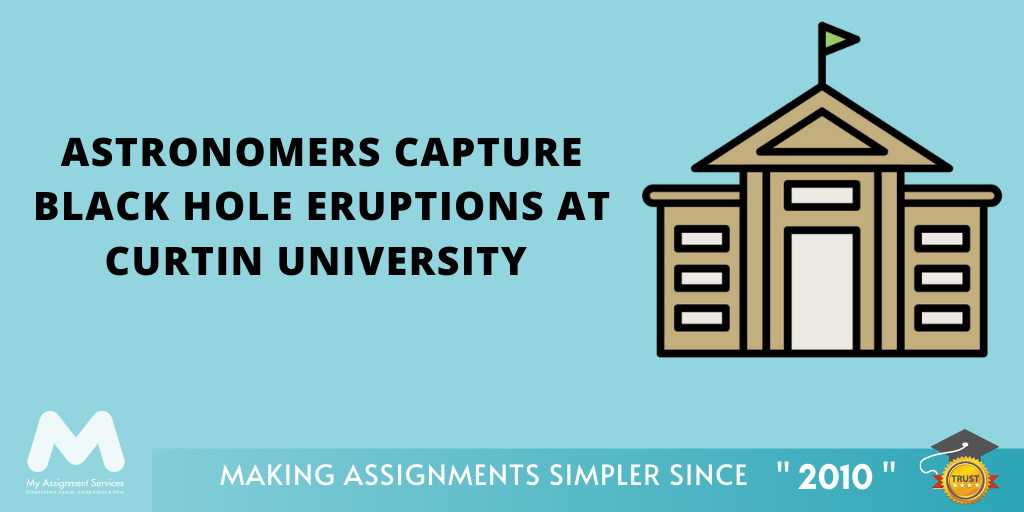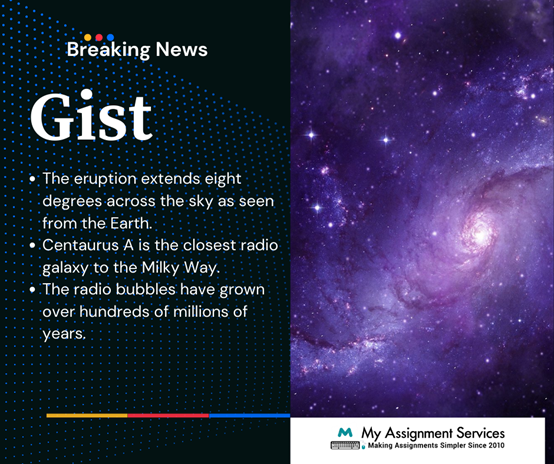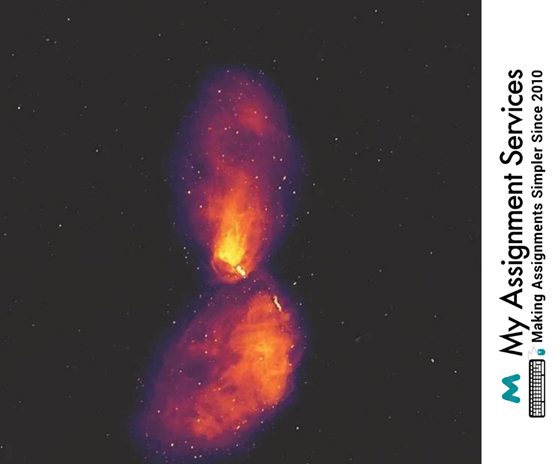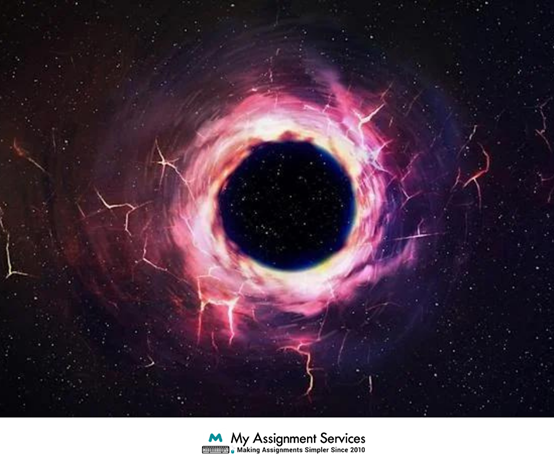Astronomers Capture Black Hole Eruptions at Curtin University

Astronomers at Curtin University have captured footage of two black hole eruptions, providing rare insight into the phenomena. The footage was captured by the university's new thermal-infrared camera, which can detect wavelengths emitted by materials that are extremely hot, such as plasma surrounding a black hole. The camera is fitted with a large telescope at the Siding Spring Observatory in New South Wales.
The footage has allowed astronomers to study how the material is ejected from a black hole and its impact on the surrounding environment. It has also provided clues about the birth of black holes and their evolution. Professor Alessandra Corsi, who led the research team, said the "extremely exciting" findings. "This is groundbreaking science that will help us understand some important aspects of the universe." This was the major newspaper headline because Curtin University has done some that were never attempted before!

Black Hole Eruption
The team says it has captured images of filaments erupting on the surface of the Sun with sufficient energy to power events seen as large as Earth itself. Astronomer Dr Lubos Perek has used cutting-edge techniques to produce images of explosive events deep within the Sun's atmosphere using COR2 coronagraphs aboard NASA's Solar and Heliospheric Observatory (SOHO) spacecraft. "COR2 images provide us with data about an active region extending over 100,000 kilometres above the photosphere or 'surface' of the Sun," he says. "It provides information about the energy which is being transferred from inside the Sun to its outer atmosphere, or corona."
"We have found regions of intense magnetic activity that can explode with enough energy to send charged particles into space at speeds high enough for them to escape the solar system entirely," Dr Perek explains.
The images are giving astronomers new insights into how solar flares form and erupt, including what triggers these powerful explosions in the first place. SOHO has been in operation since 1996 when it was launched by the European Space Agency (ESA). COR2 was installed onboard by NASA later in 1997. One of only four coronagraphs in orbit today, COR2 blocks out sunlight reflected off the photosphere so that space-based observatories can get a better look at the ebb and flow of the solar atmosphere. COR2 is unique because it blocks sunlight with an occulting disk, rather than using instruments that directly measure the light emitted by atoms in the corona, which change over time. "COR2 images allow us to see inside regions where explosive events are taking place," Dr Perek says. "This way, we can tell if explosions are occurring within our Sun or somewhere further out within its atmosphere surrounding gas clouds."

The photographs were exposed for 7 hours each on January 20th, 2017 (left) and June 9th, 2016 (right). The scale bars denote 1000 km. Credit: L.Perek/Curtin University.
Importance of Studying the Outer Atmosphere
By viewing the Sun differently through high-resolution spectral imaging using coronagraphs, Curtin University astronomers are gaining new understandings about our closest star. At its core, the Sun is composed of hydrogen atoms which create energy through nuclear fusion. This process creates helium and releases vast amounts of energy that eventually becomes light and heat. "It's important to study our Sun because it provides all the energy necessary for life on Earth," Dr Perek says.
"Without it, we would not exist." Our main source of information about this area comes from observing what happens above the photosphere, where there are regions known as coronal holes. These refer to low-density regions within the corona where gas is cooler than average and has a higher concentration of magnetic fields. "Conventional telescopes and instruments looking at the Sun's corona can only provide us with information about the light emitted from atoms in that region," Dr Perek says. "Coronagraphs, like COR2, allow us to look deeper into the atmosphere and obtain information about charged particles." The explosive events captured by Dr Perek and his team indicate what triggers solar flares to occur where they do. His research has found one such event occurred on June 9th last year. Located approximately 3.5 million kilometres below the photosphere, this explosion was associated with a coronal mass ejection (CME) which blasted billions of tons of plasma into space and hurled them towards Earth at speeds over 1000 km/second.
Data acquired on January 20th, 2017. Credit: L.Perek/Curtin University

This is the first time anyone has calculated the speed of solar material based on images from a coronagraph, Dr Perek says. "COR2 gives us access to this region of space through high-resolution spectral imaging using an occulting disk to block out sunlight reflected off the surface of the Sun." For these reasons, COR2 is an important instrument for understanding where explosive events take place within our Sun. At present most scientists agree that huge plasma loops made up of charged particles extend down into the photosphere along magnetic field lines where they interact with matter in what is known as current sheets. These collisions cause massive brightenings, which have been identified as solar flares. Dr Perek's team are among the first to agree that coronagraphs, like COR2, will play a key role in studies of heliophysics, and their techniques can be used to measure plasma explosions outside active regions on our Sun.
The images were taken by COR2, which was installed onboard by NASA later in 1997. One of only four coronagraphs in orbit today, it blocks out sunlight reflected off the photosphere so that space-based observatories can get a better look at the ebb and flow of the solar atmosphere. Credit: L.Perek/Curtin University.
A coronagraph is an instrument attached to many telescopes that allows them to see into the corona or outer regions of a star's atmosphere. As the bright light from the centre of the Sun is blocked out, it usually reveals invisible features known as spicules, bright points and jets, which can be studied in detail. In the process, information about regions above the sunspots is revealed. By imaging these structures through high-resolution spectral imaging using coronagraphs, astronomers are gaining new understandings about our closest stars. At its core, the Sun is composed of hydrogen atoms which create energy through nuclear fusion. This process creates helium and releases vast amounts of energy that eventually becomes light and heat. "It's important to study our Sun because it provides all the energy necessary for life on Earth," Dr Perek says." Without it, we would not exist."
Our understanding of the Sun and the origins of our solar system is in its infancy. Although we can see sunspots on its surface through solar telescopes, there are many processes going on deeper down that we still do not fully understand. It has been scientifically theorised that explosive events release plasma from within the corona at speeds over 1000 km/second. This kind of event is known as a Coronal Mass Ejection (CME), which happens when regions containing magnetic fields become unstable and collapse, releasing energy into space in all directions. A CME often accompanies a Solar Flare.
A coronagraph allows scientists to look deep into the atmosphere of our Sun, where high-resolution spectral imaging reveals information about magnetic field lines and particles ejected from our star's surface.
Astronomers Have High Hopes to Discover More Such Events
Our understanding of the Sun is in its infancy. Although we can see sunspots on its surface through solar telescopes, there are many processes going on deeper down that we still do not fully understand. It has been scientifically theorised that explosive events release plasma from within the corona at speeds over 1000 km/second. This kind of event is known as a Coronal Mass Ejection (CME), which happens when regions containing magnetic fields become unstable and collapse, releasing energy into space in all directions. A CME often accompanies a Solar Flare. A coronagraph allows scientists to look deep into the atmosphere of our Sun, where high-resolution spectral imaging reveals information about magnetic field lines and particles ejected from our star's surface.
As they search for answers to some of the universe's biggest mysteries, it seems every step forward leads to another question. But with projects like this one at Curtin University, we are starting to see things from an entirely different perspective and gain previously unheard-of insights into what lies beyond our own backyard.
Related Study Materials
Our Experts can answer your Assignment questions instantly.
Ask Question0 Comment
![]()









Loved reading this Blog? Share your valuable thoughts in the comment section.
Add comment